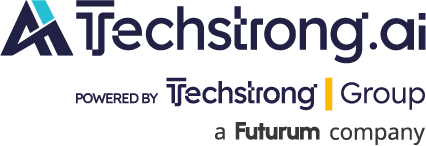
It’s no secret some industries are slower to adopt new technology than others. Fields as diverse as banking and healthcare are good examples, but on its own, and cutting across them all, is legal. No matter if it’s an in-house team at a retailer or a large law firm serving enterprise customers, data contained in legal documents and contracts must be protected – and privacy and security regulations met – or serious consequences can follow.
That said, it’s understandable why legal is wary of AI. Add in workflow adjustments and training – never mind the security issues – and it’s easy to see why leaders lean towards the familiar. GenAI tools can be useful for everyday productivity – quick answers, email drafts, managing tasks – but industry-specific technology is where the game is won. For instance, understanding and culling data from contracts across a global organization obviously requires tools designed with domain-specific tasks in mind. Gartner predicted that when it comes to AI models themselves, organizations will use smaller, task-specific models 3X more than general-purpose LLMs by 2027.
It’s harder for industries like legal to ignore the financial and operational gains of AI, and harnessing its power will increasingly be critical to competitiveness. That said, we surveyed more than 250 legal pros involved in various industries to get a better grasp on how tech-wary businesses and personal roles are evolving in the age of AI.
Create a Mandate
Topping our findings is that AI is gaining significant ground in legal, though usage varies and is usually need-based. Roughly 90% of survey respondents said their companies now use AI tools, over 40% noting multiple ones are in regular use. However, while 67% of senior leaders said they have an AI mandate to control this activity, over half (53%) of respondents said their company does not.
AI mandates are crucial, should be clear, and really need to be managed from both legal and IT perspectives. This alone opens the door to unauthorized tools being introduced into systems, expanding the attack surface to increase security risks. Companies need to centralize and vet all AI tools to be certain they meet company security and governance policies before they’re deployed – the egg does not go back into the shell once data is in the wild.
If you don’t yet have an AI mandate, answering these key questions can help guide the process:
- Data usage: Can and should your company data be used for AI training?
- Safeguards: What processes do you have in place for AI-generated content?
- Regulations: What company and country regulations must be followed? Be sure to consider other countries where your company may operate.
- Restrictions: Are there limits related to data that can be fed into AI? Is some data more sensitive?
- Sanctions: Should “personal” AI subscriptions be restricted? Should these be company-sanctioned only?
Overcome Reservations
Despite what may seem like high AI usage, survey respondents still had significant reservations. The foremost concern cited was privacy and security (45%), followed by limited understanding or training (37%). A lack of use case value and implementation costs were next, each hovering around 30%.
For organisations trying to advance AI initiatives, internal reservations need to be overcome. They can be addressed in AI mandates and during the process for selecting tool vendors. Keep in mind that when new technology involves AI, the environment must be secure and siloed. You should only use your company’s data, and it should never be used to train or improve another organisation’s model.
When approached in this manner, reservations can be overcome. What’s more, a business can feel confident in its use of AI and the results it gleans, while driving greater efficiency, performance and other business benefits. If you’re wondering which member of the C-suite legal considers its greatest AI partner, 40% of respondents said the CEO, with roughly 25% noting the CFO and COO individually.
Think Strategically
AI can automate tasks and dramatically streamline processes. Still, there’s more to understand about the benefits and safety of the technology, and companies must learn how to use it strategically. After all, AI’s greatest potential actually is in uncovering trends, extracting insights and identifying new opportunities.
Nearly four of five respondents felt the legal function is evolving. Leaders and teams are encountering market complexities, tremendous economic volatility, and AI and automation are clearly showing they can shape fortunes for the better. What’s more, in-house legal pros are no longer limited to traditional legal tasks, and by leveraging AI, they can expand their roles and become strategic assets themselves in 2025 and well into the future.
And it’s likely a pattern you’ll see in many industries now overcoming their own tech wariness in the age of AI.

